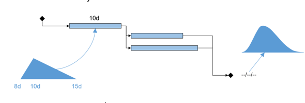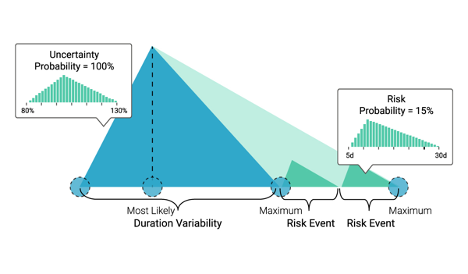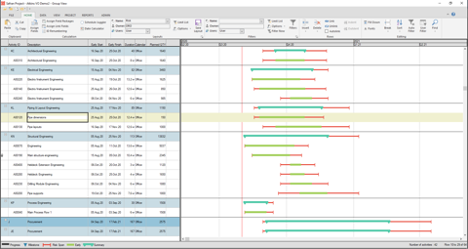This is the fourth blog in our series of discussing Gantt charts. Our previous blogs have talked about the origin of the Gantt and the benefits of using Gantt charts for project management, how to create and how to enhance your Gantt chart.
In this blog we will discuss why you should add uncertainty to the Gantt.
WHY SHOULD PROJECT MANAGERS INTRODUCE UNCERTAINTY TO THEIR SCHEDULES?
Estimates are uncertain and activity durations are uncertain. We know this, and yet activity durations are represented by a single point estimate in nearly every schedule, when it in fact can take on a range of durations.
All planner and project managers know that an activity can take more or less time than is stated in the schedule because of uncertainty, estimating inaccuracy, risks, resource availability, change in performance, changing priorities and more.
Schedules, durations, and time are often regarded as facts about the future. A deterministic schedule can only be met if all activities go according to plan. And they never do. The fact is that schedules and durations involve significant uncertainty. This uncertainty can be communicated using Gantt charts.

Inputs That Include a Range of Dates Produce Outputs with a Range of Dates (Safran)
When the input is a range of durations the result from the risk analysis is also a range of dates. This range can tell you something about how likely it is that you will complete your Project on time. Likely? Unlikely?
With this information, those responsible for project management and project schedules are better able to communicate the potential for project risk, and also to lay the groundwork for improved expectations from management and other stakeholders.
You should also be aware that the duration of an activity can be affected by duration uncertainty (estimate uncertainty) and Risk events.
 Using software like Safran Planner and Safran Project lets you easily address duration uncertainties in estimates by applying 3-point estimates (minimum, most likely, and maximum durations) and run Monte Carlo simulations on your schedules. Safran Risk also lets you add specific risks events with probability and impact.
Using software like Safran Planner and Safran Project lets you easily address duration uncertainties in estimates by applying 3-point estimates (minimum, most likely, and maximum durations) and run Monte Carlo simulations on your schedules. Safran Risk also lets you add specific risks events with probability and impact.
Including the result from uncertainty within your Gantt is an effective way of communicating how risk and uncertainty affects each activity, important milestones, and the overall project schedule.
Using Safran Planner or Safran Project you can add this element of uncertainty or project risk as specific symbols. You may want to show the entire uncertainty span or select a confidence level like 80% or 90%.
When bars representing the uncertainty are displayed together with the deterministic (single point estimate) bars, it is easy to see the potential impact uncertainties have on your project. These comparisons will help you to understand how likely it is that you will reach the milestones and the completion date.

Deterministic Schedule including Earliest Start Dates and Latest Finish Dates from Schedule Risk Analysis
Adding uncertainty and risk to your schedule improves schedule quality and confidence and can help you build more realistic schedules.
Adding the uncertainty to the Gantt chart also helps you improve communication of uncertainty and risk and helps develop a better understanding of the schedule among the project team. Team members, stakeholders, and managers will be able to better understand uncertainty and risk with the visual references in your Gantt charts.
For more information about Safran's software tools for planning, scheduling, and managing complex projects, please get in touch with us for a chat or a demonstration



.png?width=250&name=Safran%20Blog%20Series%20-%20Blog%204%20Graphic%20(Previous).png)
.png?width=250&name=Safran%20Blog%20Series%20-%20Blog%204%20Graphic%20(next).png)
%20(2).png?width=250&name=Safran%20Blog%20Series%20-%20Blog%204%20Graphic%20(next)%20(2).png)
